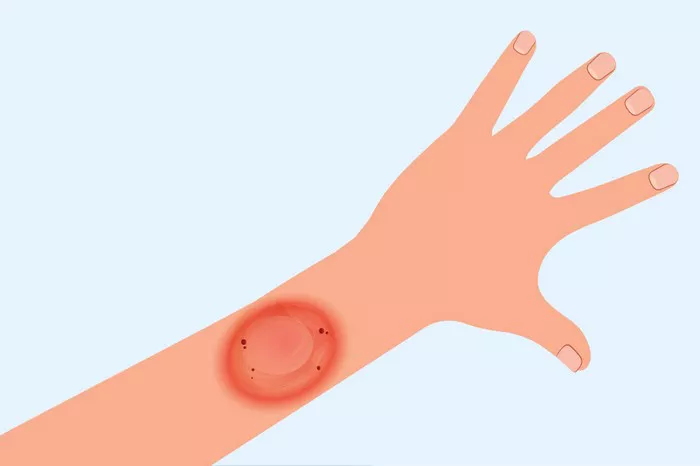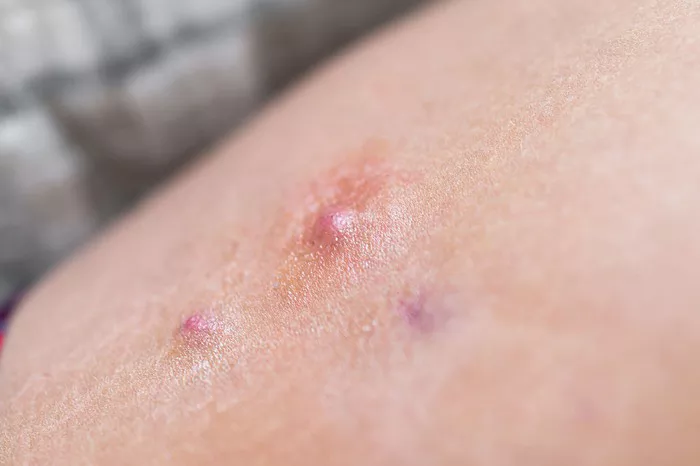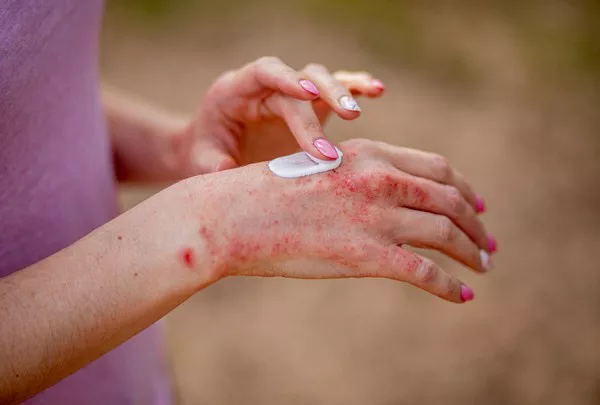Ringworm, despite its name, is not caused by worms but by a group of fungi called dermatophytes. These fungi infect the skin, hair, and nails, leading to a condition known as tinea. Ringworm can affect various parts of the body, including the scalp (tinea capitis), body (tinea corporis), feet (tinea pedis), and groin (tinea cruris). One of the most common questions people have about ringworm is whether it blisters when healing. This article will explore the symptoms of ringworm, the healing process, and what to expect during recovery.
Understanding Ringworm
Ringworm manifests as a red, circular rash with a clear center. The edges of the rash may be slightly raised and can appear scaly, itchy, and inflamed. The condition is highly contagious and can be spread through direct contact with an infected person or animal, or by touching contaminated objects such as towels, clothing, or surfaces.
Symptoms of Ringworm
The primary symptoms of ringworm include:
- Red, Itchy Patches: These patches are usually round or oval with a clear center and raised, scaly edges.
- Blisters: In some cases, especially with tinea pedis (athlete’s foot), small blisters may form on the affected area.
- Cracking and Peeling Skin: This is more common with ringworm of the feet and hands.
- Hair Loss: In cases of tinea capitis, patches of hair loss may occur along with scaling of the scalp.
The Healing Process of Ringworm
Healing from ringworm involves a few distinct phases. Understanding these phases can help you know what to expect and when to seek medical advice.
Initial Treatment Phase
The first step in treating ringworm is the application of antifungal medication. This can be in the form of topical creams, ointments, or oral medications, depending on the severity and location of the infection. Common over-the-counter antifungal creams include clotrimazole, miconazole, and terbinafine.
Response to Treatment
Once treatment begins, the symptoms of ringworm should start to improve within a few days. The itching and redness typically subside first, followed by the gradual fading of the rash. However, it is essential to continue the full course of treatment even if the symptoms appear to have resolved, as stopping early can lead to a recurrence of the infection.
Does Ringworm Blister When Healing?
Blistering is not a typical sign of healing for most cases of ringworm. However, there are a few scenarios where blisters might appear during the treatment process:
1. Secondary Infection: If the affected area becomes secondarily infected with bacteria, blisters may form. This is more likely if the skin has been scratched excessively, leading to open sores and an increased risk of bacterial infection.
2. Allergic Reaction: Some individuals may develop an allergic reaction to the antifungal medication, resulting in blistering. This is known as an “id reaction” or “autoeczematization” and can cause blisters to appear in areas not originally affected by ringworm.
3. Intense Inflammation: In some cases, particularly with severe or extensive ringworm infections, intense inflammation during the healing process can cause blistering. This can happen as the body’s immune system reacts to the dying fungi.
Managing Blisters During Healing
If blisters do occur during the healing process of ringworm, it is essential to manage them properly to prevent further complications.
1. Keep the Area Clean: Gently wash the affected area with mild soap and water. Avoid harsh scrubbing, which can aggravate the skin.
2. Avoid Popping Blisters: Allow blisters to heal naturally. Popping them can lead to infection and delay the healing process.
3. Use a Barrier: Apply a non-stick bandage or dressing to protect the blistered area from friction and further irritation.
4. Consult a Healthcare Professional: If blisters are severe, painful, or show signs of infection (such as increased redness, swelling, or pus), seek medical advice promptly.
SEE ALSO: How Long is Ringworm Contagious on Surfaces?
Preventing Ringworm Recurrence
Preventing the recurrence of ringworm is as crucial as treating the infection. Here are some steps to help avoid getting ringworm again:
1. Maintain Good Hygiene: Regularly wash your hands, especially after touching animals or soil.
2. Keep Skin Dry and Clean: Fungi thrive in warm, moist environments. Ensure your skin is clean and dry, particularly in areas prone to sweating.
3. Avoid Sharing Personal Items: Do not share towels, clothing, or other personal items with others to prevent the spread of infection.
4. Clean and Disinfect: Regularly clean and disinfect surfaces and items that may be contaminated with the fungi.
5. Wear Protective Clothing: In communal areas such as gyms, locker rooms, and swimming pools, wear flip-flops or other protective footwear to reduce the risk of infection.
Conclusion
Blistering is not a common feature of healing ringworm but can occur in certain situations such as secondary infections, allergic reactions, or intense inflammation. Understanding the symptoms and healing process of ringworm can help manage expectations and ensure effective treatment. If you experience blisters during ringworm treatment, proper care and consultation with a healthcare professional are essential to avoid complications and ensure a full recovery. Prevention strategies are crucial to avoid reinfection and maintain healthy skin.
Related Topics:


























